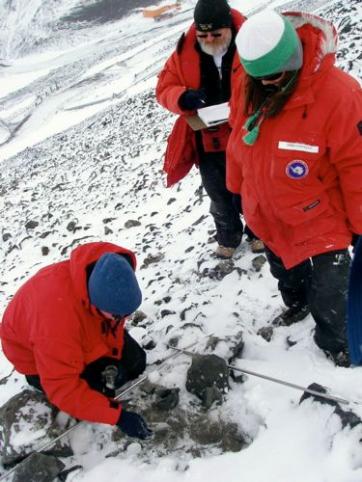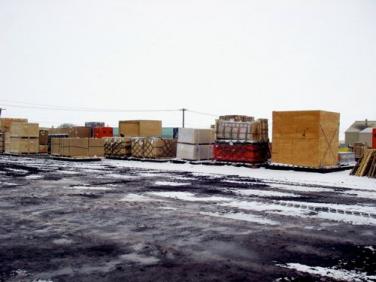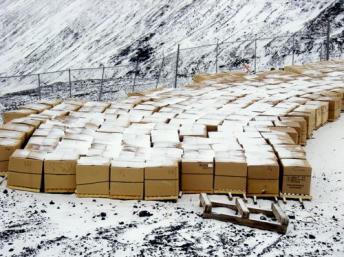December 3, 2007, Thursday McMurdo Station, Antarctica 2:00pm High: +16F wind chill: +1F Low: +14F wind chill -2F Winds: E 11 knts; Station Pressure: 28.815” Present Conditions: mostly cloudy and overcast; flurries picking up to gusty and more snowfall
For the last two days we have been intensely collecting the remaining terrestrial samples around McMurdo. This meant that we were scrambling up scree slopes and back down, under pipelines, over pipelines, through tank yards, machine yards, lumber yards and hazardous waste yards.

SamplingSampling refers to the process of selecting units or portions of a larger group that will be studied in order to answer questions about the larger group. The units can be people, water samples, ice cores, or any other appropriate object. Participants will explore the meaning of sampling and how it impacts experimental design and explore factors that define and limit sampling in the variety of projects visited during the expedition. They will consider how results from the chosen samples are used to describe the bigger target of a project's study. in the snow...
We also collected samples in and around dormitories, multi-use buildings, along roadways, near the former nuclear power plant, and empty lands over any ridge that Terry said the GPSA Global Positioning System (GPS) is a satellite-based navigation system used to track the location or position of objects on the Earth’s surface. took us. What I found to be most out of sorts were the storage and supply yards of materials for machines, living quarters, projects, support materials that were stacked on long flat bed pallets in several different yards. 
Cargo yard
The only fence is the one around the hazardous waste yard where toxic materials were housed in large 50 gallon drums, 1 ton boxes and cargo shipping containers. Presumably these materials will be repatriated to the USA. The 1-ton shipping boxes that contain biological waste and human waste were in the hazardous waste yard and just on the other side of the fence were the stacks of boxes of food waste, all destined for a landfill nearer to you.

Left Over food...
Kirk Beckendorff’s class in Texas asking about the nuclear power plant posted a question earlier. We tested in the soils on the grounds of the former plant. Steve says that the area does not show any kind of increase radioactivity that is abnormal. However, rocks in the area do test for higher levels of radioactivity but this is naturally occurring.


Comments